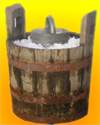
On 8 Jun 1786, the first American advertisement for commercially-made ice cream appeared in the New York Post Boy. Other details of the history of ice cream in American vary depending on the source, but books seems to agree on the fact of the date of the advertisement.
A Harper's Bazaar article on the Origin of Ice Cream (1899) provides some more information.

On 8 Jun 1955, Tim Berners-Lee was born, the English computer scientist who invented the World Wide Web when he thought “Suppose all the information stored on computers everywhere were linked?” Today's book pick is: Weaving the Web: The Original Design and Ultimate Destiny of the World Wide Web, by Tim Berners-Lee, in which he provides a lucid but impersonal memoir and conveys some of the vital history and intriguing philosophy concerning the Internet. He coined the acronyms URL, HTML and the “World Wide Web.” Who better to write on this subject?
It is available from Amazon, typically about New from $6.58. Used from $1.25. (As of earlier time of writing - subject to change.)
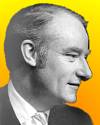 | The major credit I think Jim and I deserve … is for selecting the right problem and sticking to it. It’s true that by blundering about we stumbled on gold, but the fact remains that we were looking for gold. Both of us had decided, quite independently of each other, that the central problem in molecular biology was the chemical structure of the gene. … We could not see what the answer was, but we considered it so important that we were determined to think about it long and hard, from any relevant point of view. |
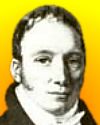 | I never know whether to be more surprised at Darwin himself for making so much of natural selection, or at his opponents for making so little of it. |
 | The web is more a social creation than a technical one. I designed it for a social effect—to help people work together—and not as a technical toy. The ultimate goal of the Web is to support and improve our weblike existence in the world. We clump into families, associations, and companies. We develop trust across the miles and distrust around the corner. |
| Before you look at today's web page, see if you can answer some of these questions about the events that happened on this day. Some of the names are very familiar. Others will likely stump you. Tickle your curiosity with these questions, then check your answers on today's web page. | |
| Births | |
 | Francis Crick was the British biophysicist, born 8 Jun 1916, who shared with James Watson, a Nobel Prize for Physiology or Medicine. It was awarded for their determination of the molecular structure of DNA - deoxyribonucleic acid. DNA is the chemical substance ultimately responsible for hereditary control of life functions. This accomplishment became a cornerstone of genetics and was widely regarded as one of the most important discoveries of 20th-century biology. In which decade was the Nobel Prize awarded to Crick and Watson? |
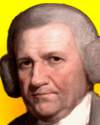 | John Smeaton, born 8 Jun 1724, an English civil engineer and designer, is regarded as the father of civil engineering in Britain. In 1756-59 he built the third lighthouse at Plymouth, Devon, using dovetailed blocks of portland stone. He was the first to recognize what constitutes a hydraulic lime when he discovered the best mortar for underwater construction to be limestone with a high proportion of clay. Smeaton also constructed a canal, built bridges, completed Ramsgate harbour, improved the safety of the diving bell, and introduced cast-iron shafts and gearing for wind and water mills. What is the name of the Plymouth lighthouse (known in a song)? |
| Deaths | |
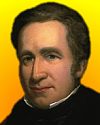 | Joseph Paxton (1801-1865) was an English architect, designer of the architect of the building for the Great Exhibition of 1851 in London. The building was remarkable for its major use glass in its construction. Can you name this building? |
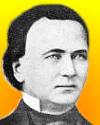 | Walter Hunt died on 8 Jun 1859. He was the American inventor of what he called a “dress pin” on his patent. He sold the patent for $400 at a time of financial need. That was his sole benefit from the patent, although his pin was manufactured in vast numbers, and still is in the present day. By what name do we now know his invention? |
| Events | |
 | On 8 Jun of a certain year, creation of element 93, neptunium (symbol Np) was announced by Edwin M. McMillan and Philip H. Abelson working at the University of California at Berkeley. In what decade was neptunium made? |
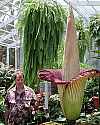 | On 8 Jun 1937, the world's largest flower bloomed in New York Botanical Garden; it was a giant Sumatran calla lily measuring 8.5 feet high and 4 feet in diameter. It has a distinctive fragrance. What does this fragrance imitate? |
Fast answers for the previous newsletter for June 7: a method of evaluating an infant shortly after birth to assess its well-being • chloroform • artificial intelligence • Joseph von Fraunhofer • solar power • the decade including the year 1870 • the decade including the year 1954.
 If you enjoy this newsletter, the website, or wish to offer encouragement or ideas, please send feedback by using your mail reader Reply button.
If you enjoy this newsletter, the website, or wish to offer encouragement or ideas, please send feedback by using your mail reader Reply button. Your click on a Facebook, StumbleUpon, or other social button on the site webpages is also a welcome sign of appreciation. Thank you for using them.
© This newsletter is copyright 2020 by todayinsci.com. Please respect the Webmaster's wishes and do not put copies online of the Newsletter — or any Today in Science History webpage. (If you already have done so, please remove them. Thank you.) Offline use in education is encouraged such as a printout on a bulletin board, or projected for classroom viewing. Online, descriptive links to our pages are welcomed, as these will provide a reader with the most recent revisions, additions and/or corrections of a webpage. For any other copyright questions, please contact the Webmaster by using your mail reader Reply button.
--
If you do not want to receive any more newsletters, Unsubscribe
To update your preferences and to unsubscribe visit this link
Executive Real Estate Business Class
-
"It was like a man with wings. It wasn't like anything you'd see on TV or in a monster movie." ...
About the publisher
Search This Blog
Blog Archive
-
▼
2020
(1542)
-
▼
June
(193)
- TRAVEL: Epic America—Our photographers' picks
- On This Day for June 30 - Night of the Long Knives...
- Newsletter for Tuesday 30 June.
- We told you: Mass-Tracking COVI-PASS Immunity Pass...
- June 30: Theory of Evolution, the Night of Long Kn...
- HISTORY: And the symbols come tumbling down
- Explore the Ocean with Nat Geo Kids Magazine
- New This Week on History News Network
- On This Day for June 29 - London's Globe Theatre d...
- Newsletter for Monday 29 June.
- COVID Cartoon Night (not funny) while we weep for ...
- June 29: Shakespeare's Globe Theatre Burns Down an...
- FAMILY: Getting your kid to help others
- Henry VIII's surprising burial place | The world's...
- On This Day for June 28 - Assassination of Archduk...
- Say the wrong thing: lose visitation with your kid...
- Newsletter for Sunday 28 June.
- June 28: Franz Ferdinand Assassinated, the Treaty ...
- The Compass: Kenya
- How the Invention of A/C Changed US Politics
- On This Day for June 27 - Yen made official moneta...
- Newsletter for Saturday 27 June.
- June 27: 1st Women's Magazine, Nuclear Power Stati...
- CORONAVIRUS SPECIAL EDITION: The virus hasn't won ...
- PHOTOGRAPHY: A legendary photographer's enduring r...
- Partner: How to keep your kids learning vocab this...
- Archaeologists Say They've Just Solved The 400-Yea...
- The Roundup Top Ten From History News Network
- On This Day for June 26 - Opening of CN Tower, Bab...
- Newsletter for Friday 26 June.
- Contact Tracer warns of forced vaccinations plus R...
- June 26: Reconnaissance balloons, Kennedy's Clario...
- YOUR WEEKLY ESCAPE: A dangerous quest for hallucin...
- That Was No Bunny: Watch New Episode of Alone Tonight
- ANIMALS: Leave that elephant alone
- On This Day for June 25 - Korean War begun, Antoni...
- Newsletter for Thursday 25 June.
- June 25: 1st Female PhD, Custer's Last Stand, the ...
- SCIENCE: The heat wave in the Arctic
- Demystified: What Does "SPF" Mean?
- On This Day for June 24 - Russia invaded by Napole...
- Breaking News from History News Network
- Newsletter for Wednesday 24 June.
- June 24: Fatal Medieval Dance Manias, the Gadsden ...
- TRAVEL: Fear of flying and hotel rooms fuels RV boom
- Be at the Front Lines of History's Most Epic Battl...
- On This Day for June 23 - Battle of Bannockburn, C...
- Lowest US coronavirus deaths reported since March ...
- Newsletter for Tuesday 23 June.
- June 23: World's Oldest Parliament, the Contracept...
- Life Under The Shah: What Iran Looked Like Before ...
- HISTORY: A swift goodbye to some racist imagery (a...
- A whole year of Britannica Premium for $49.99?
- New This Week on History News Network
- On This Day for June 22 - Mutiny against Henry Hud...
- Newsletter for Monday 22 June.
- Clintons and Gates Connected at the Hip plus Cardi...
- June 22: Galileo Galilei Recants, Last Shot of the...
- FAMILY: How to keep kids safe as places reopen
- On This Day for June 21 - Japanese defenses destro...
- Newsletter for Sunday 21 June.
- June 21: 1st Governor General of India, Fermat's L...
- The Compass: Ecuador
- On This Day for June 20 - Casket Letters found, Ho...
- Newsletter for Saturday 20 June.
- CORONAVIRUS SPECIAL EDITION: Could public bathroom...
- Mandatory Vaccines coming: Bill Gates Accuses Tho...
- June 20: Attila the Hun, the University of Oxford ...
- PHOTOGRAPHY: Fatherhood 2020 — ‘Fear and courage a...
- Why is America haunted by its past?
- The Woman Who Claimed Emmett Till Wolf-Whistled At...
- This Week's Roundup Top Ten from History News Network
- Exclusive HistoryExtra podcasts | Listen now
- On This Day for June 19 - Rosenbergs executed for ...
- Newsletter for Friday 19 June.
- World Economic Forum starts The Great Reset initia...
- YOUR WEEKLY ESCAPE: How the ultimate shark photo w...
- June 19: London's Metropolitan Police and the 1st ...
- Predator Encounters. Watch New Episode of Alone To...
- ANIMALS: Finding the snow leopards
- Count on a Source You Can Trust
- On This Day for June 18 - War of 1812 begun, Sir P...
- Newsletter for Thursday 18 June.
- Lockdowns, tracing, testing, vaccinating, and Libe...
- June 18: US-British War of 1812, the Battle of Wat...
- SCIENCE: They grew fearsome. They began soft, and ...
- Demystified: How Are Sports Chosen for the Olympics?
- Breaking News from History News Network
- On This Day for June 17 - Arrest of O.J. Simpson, ...
- Newsletter for Wednesday 17 June.
- June 17: Mumtaz Mahal, the French Revolution and G...
- TRAVEL: They hurtled the world's highest point
- Explore together with Nat Geo Kids magazine
- On This Day for June 16 - First woman in space, Jo...
- Newsletter for Tuesday 16 June.
- June 16: Salvation Army Forms, Bloomsday and FDR's...
- HISTORY: Why we can’t shake COVID-19
- New This Week on History News Network
- On This Day for June 15 - Magna Carta sealed by Ki...
- Yes, they really are forcing changes to your world...
-
▼
June
(193)
-
Blogroll
-
About
HistoryFact










0 comments:
Post a Comment